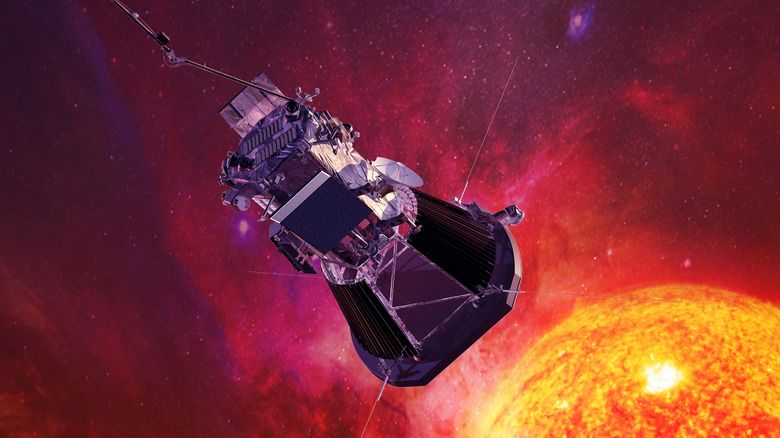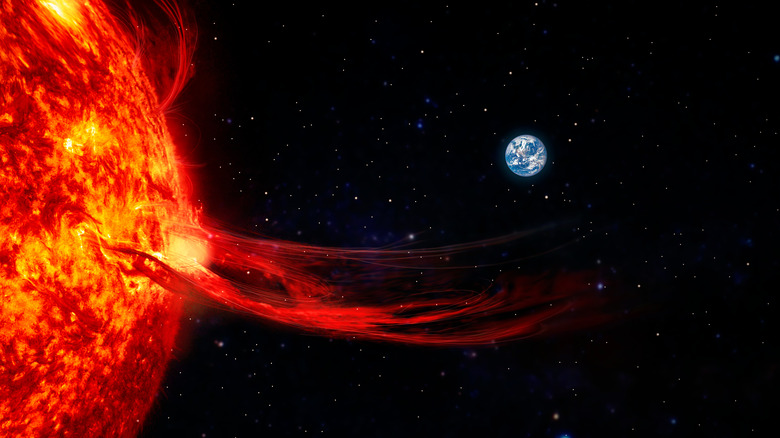All About NASA's Intense Plan To Touch The Sun
There's something about us humans. When we see something hot, we just have to touch it, just to see... You're thinking about that time when you touched the car cigarette lighter as a kid, aren't you? You just had to know. Well, we apparently never grow out of that, because the scientists over at NASA have hatched a harebrained plan to touch the sun. Some folks just never learn.
Well, it's not like they're going to land a rover on the sun. According to Ranker, NASA's Parker Solar Probe will "touch" the sun's atmosphere. The probe was launched in 2018, and is currently carrying out its mission of orbiting the sun 24 times before its return in 2025. During its two dozen orbits, it will come within 3.9 million miles of the sun's surface, which is seven times closer than any previous mission has come to the floating ball of fire. (It will also be the fastest spacecraft humanity has ever invented, ergo, the fastest thing humanity has ever invented, period. It's currently hurtling through space at 430,000 miles per hour.) At such distances, the temperature is around 2,500 degrees Fahrenheit. That's pretty toasty, but the car-sized probe is equipped with a hefty carbon composite heat shield that will protect the vital technology inside. What scientists hope to discover from what Parker picks up could end up helping us avert a disaster of galactic proportions.
What NASA's Parker Solar Probe hopes to learn about the sun
High on the list of potential discoveries for the Parker Solar Probe are answers to two cosmic questions. First, scientists hope the data it collects will be able to tell them how solar wind works, specifically why it accelerates. The idea of solar winds was considered laughable when Dr. Eugene Parker first presented the theory in 1958. However, since then scientific research has revealed that he was onto something. That's why the probe was christened with his name. Fun fact: this is the first NASA mission to ever be named after a living scientist.
Scientists also hope to solve the mystery of why the sun's corona — the atmosphere of plasma that surrounds it — is hotter than its actual surface. And the difference in temperatures isn't negligible. The surface of the sun is around 10,000 degrees Fahrenheit, but temperatures in the corona reach a scorching 3 million degrees. According to Space.com, solving these mysteries could be key to averting a massive disaster of global proportions. NASA says that the better we understand solar weather, the better we'll be prepared in the event that something like a solar storm affects the technologies on Earth we've all become so dependent on. With four years left in the Parker Solar Probe's mission, scientists still have much to learn about these enigmatic solar phenomena.

